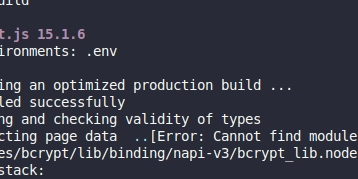How to Implement a Custom Lexer Using Tree Sitter in Python
Introduction Implementing syntax highlighting for your QScintilla-based IDE using Tree Sitter can be both rewarding and challenging. If you're facing issues with color mismatching and incomplete highlight recognition after editing text, you're not alone. This tutorial will walk you through the implementation of a custom lexer that leverages the powerful parsing capabilities of Tree Sitter, ensuring accurate and efficient syntax highlighting for Python code in your application. Why Syntax Highlighting Issues Occur Syntax highlighting problems often stem from the way the text is parsed and how styling is applied afterward. When using Tree Sitter, each node in the abstract syntax tree (AST) corresponds to a specific part of your code, like keywords, functions, or comments. However, if the highlights are improperly configured, or if there are issues in your styleText method, mismatched colors can arise, especially as the text is edited. Setting Up Your Custom Lexer To implement your custom lexer correctly, follow these organized steps: Step 1: Import Necessary Libraries Ensure that you have all the required dependencies set up: import tree_sitter_python as PYTHON from tree_sitter import Parser, Node, Language from PyQt5.QtGui import QColor, QFont from PyQt5.Qsci import QsciLexerCustom Step 2: Define Your Lexer Class Define your lexer class that inherits from QsciLexerCustom: class PythonLexer(QsciLexerCustom): DEFAULT = 0 KEYWORD = 1 TYPES = 2 STRING = 3 KEYARGS = 4 BRACKETS = 5 COMMENTS = 6 CONSTANTS = 7 FUNCTIONS = 8 CLASS_DEF = 9 FUNCTION_DEF = 10 def __init__(self, editor: QsciScintilla): super().__init__(editor, 'Python') self.editor = editor self.language_name = 'Python' defaults = {'color': '#ffffff', 'paper': '#1e1e1e', 'font': ('JetBrains Mono', 14)} self.setDefaultColor(QColor(defaults['color'])) self.setDefaultPaper(QColor(defaults['paper'])) self.setDefaultFont(QFont(*defaults['font'])) self.createStyle() self.parser = Parser(Language(PYTHON.language())) Step 3: Create Styling Colors Use the createStyle method to configure your different syntax styles. Each style is associated with colors that represent the type of syntax being highlighted: def createStyle(self): self.setColor(QColor('#abb2bf'), PythonLexer.DEFAULT) self.setColor(QColor('#c678dd'), PythonLexer.KEYWORD) ... # Set other styles similarly Step 4: Style the Text The styleText method is crucial for parsing the text and applying styles. Here, we will ensure that highlights are built accurately: def styleText(self, start, end): self.startStyling(start) raw_bytes = self.editor.bytes(start, end) text = raw_bytes.data().decode('utf-8').replace('\0', '') tree = self.parser.parse(bytes(text, 'utf-8')) highlights = [] self.buildHighlights(tree.root_node, highlights) highlights.sort(key=lambda h: h[0]) # Sort by start byte for start_byte, end_byte, style in highlights: self.setStyling(end_byte - start_byte, style) Here it's important to adjust the lengths correctly for setStyling. Ensure that the parameters are consistent with the actual text length for proper application. Step 5: Building Highlights The buildHighlights method traverses the AST and assigns styles based on node types. Ensure that you're accurately identifying the type of each node in your parser: def buildHighlights(self, node: Node, highlights: list): for child in node.children: style = None if child.type == 'comment': style = PythonLexer.COMMENTS elif child.type == 'string': style = PythonLexer.STRING ... # Add other node types if style: highlights.append((child.start_byte, child.end_byte, style)) self.buildHighlights(child, highlights) Frequently Asked Questions What is Tree Sitter? Tree Sitter is a powerful parser generator for programming languages. It can efficiently parse source code into an AST. Why Choose Tree Sitter Over Regex? Tree Sitter offers better accuracy and efficiency for complex languages as it handles nested structures, which can be cumbersome with regular expressions. Can I Customize the Colors Further? Yes! Feel free to adjust the color values in the createStyle method to fit your IDE's theme. Conclusion Implementing a custom lexer using Tree Sitter offers robust support for syntax highlighting in your PyQt IDE. By following the organized steps above and ensuring careful attention to the parsing and styling methods, you can overcome the issues of incorrect color assignments and incomplete highlighting. Happy coding!

Introduction
Implementing syntax highlighting for your QScintilla-based IDE using Tree Sitter can be both rewarding and challenging. If you're facing issues with color mismatching and incomplete highlight recognition after editing text, you're not alone. This tutorial will walk you through the implementation of a custom lexer that leverages the powerful parsing capabilities of Tree Sitter, ensuring accurate and efficient syntax highlighting for Python code in your application.
Why Syntax Highlighting Issues Occur
Syntax highlighting problems often stem from the way the text is parsed and how styling is applied afterward. When using Tree Sitter, each node in the abstract syntax tree (AST) corresponds to a specific part of your code, like keywords, functions, or comments. However, if the highlights are improperly configured, or if there are issues in your styleText method, mismatched colors can arise, especially as the text is edited.
Setting Up Your Custom Lexer
To implement your custom lexer correctly, follow these organized steps:
Step 1: Import Necessary Libraries
Ensure that you have all the required dependencies set up:
import tree_sitter_python as PYTHON
from tree_sitter import Parser, Node, Language
from PyQt5.QtGui import QColor, QFont
from PyQt5.Qsci import QsciLexerCustom
Step 2: Define Your Lexer Class
Define your lexer class that inherits from QsciLexerCustom:
class PythonLexer(QsciLexerCustom):
DEFAULT = 0
KEYWORD = 1
TYPES = 2
STRING = 3
KEYARGS = 4
BRACKETS = 5
COMMENTS = 6
CONSTANTS = 7
FUNCTIONS = 8
CLASS_DEF = 9
FUNCTION_DEF = 10
def __init__(self, editor: QsciScintilla):
super().__init__(editor, 'Python')
self.editor = editor
self.language_name = 'Python'
defaults = {'color': '#ffffff', 'paper': '#1e1e1e', 'font': ('JetBrains Mono', 14)}
self.setDefaultColor(QColor(defaults['color']))
self.setDefaultPaper(QColor(defaults['paper']))
self.setDefaultFont(QFont(*defaults['font']))
self.createStyle()
self.parser = Parser(Language(PYTHON.language()))
Step 3: Create Styling Colors
Use the createStyle method to configure your different syntax styles. Each style is associated with colors that represent the type of syntax being highlighted:
def createStyle(self):
self.setColor(QColor('#abb2bf'), PythonLexer.DEFAULT)
self.setColor(QColor('#c678dd'), PythonLexer.KEYWORD)
... # Set other styles similarly
Step 4: Style the Text
The styleText method is crucial for parsing the text and applying styles. Here, we will ensure that highlights are built accurately:
def styleText(self, start, end):
self.startStyling(start)
raw_bytes = self.editor.bytes(start, end)
text = raw_bytes.data().decode('utf-8').replace('\0', '')
tree = self.parser.parse(bytes(text, 'utf-8'))
highlights = []
self.buildHighlights(tree.root_node, highlights)
highlights.sort(key=lambda h: h[0]) # Sort by start byte
for start_byte, end_byte, style in highlights:
self.setStyling(end_byte - start_byte, style)
Here it's important to adjust the lengths correctly for setStyling. Ensure that the parameters are consistent with the actual text length for proper application.
Step 5: Building Highlights
The buildHighlights method traverses the AST and assigns styles based on node types. Ensure that you're accurately identifying the type of each node in your parser:
def buildHighlights(self, node: Node, highlights: list):
for child in node.children:
style = None
if child.type == 'comment':
style = PythonLexer.COMMENTS
elif child.type == 'string':
style = PythonLexer.STRING
... # Add other node types
if style:
highlights.append((child.start_byte, child.end_byte, style))
self.buildHighlights(child, highlights)
Frequently Asked Questions
What is Tree Sitter?
Tree Sitter is a powerful parser generator for programming languages. It can efficiently parse source code into an AST.
Why Choose Tree Sitter Over Regex?
Tree Sitter offers better accuracy and efficiency for complex languages as it handles nested structures, which can be cumbersome with regular expressions.
Can I Customize the Colors Further?
Yes! Feel free to adjust the color values in the createStyle method to fit your IDE's theme.
Conclusion
Implementing a custom lexer using Tree Sitter offers robust support for syntax highlighting in your PyQt IDE. By following the organized steps above and ensuring careful attention to the parsing and styling methods, you can overcome the issues of incorrect color assignments and incomplete highlighting. Happy coding!












































































































































































![[The AI Show Episode 146]: Rise of “AI-First” Companies, AI Job Disruption, GPT-4o Update Gets Rolled Back, How Big Consulting Firms Use AI, and Meta AI App](https://www.marketingaiinstitute.com/hubfs/ep%20146%20cover.png)



























































































































![[DEALS] Internxt Cloud Storage Lifetime Subscription: 10TB Plan (88% off) & Other Deals Up To 98% Off – Offers End Soon!](https://www.javacodegeeks.com/wp-content/uploads/2012/12/jcg-logo.jpg)


![Ditching a Microsoft Job to Enter Startup Purgatory with Lonewolf Engineer Sam Crombie [Podcast #171]](https://cdn.hashnode.com/res/hashnode/image/upload/v1746753508177/0cd57f66-fdb0-4972-b285-1443a7db39fc.png?#)





























































































































![Apple M4 MacBook Air Hits New All-Time Low of $824 [Deal]](https://www.iclarified.com/images/news/97288/97288/97288-640.jpg)















































































































![[Fixed] Gemini 2.5 Flash missing file upload for free app users](https://i0.wp.com/9to5google.com/wp-content/uploads/sites/4/2025/03/google-gemini-workspace-1.jpg?resize=1200%2C628&quality=82&strip=all&ssl=1)


![As Galaxy Watch prepares a major change, which smartwatch design to you prefer? [Poll]](https://i0.wp.com/9to5google.com/wp-content/uploads/sites/4/2024/07/Galaxy-Watch-Ultra-and-Apple-Watch-Ultra-1.jpg?resize=1200%2C628&quality=82&strip=all&ssl=1)











![An Apple Product Renaissance Is on the Way [Gurman]](https://www.iclarified.com/images/news/97286/97286/97286-640.jpg)
![Apple to Sync Captive Wi-Fi Logins Across iPhone, iPad, and Mac [Report]](https://www.iclarified.com/images/news/97284/97284/97284-640.jpg)
![Apple M4 iMac Drops to New All-Time Low Price of $1059 [Deal]](https://www.iclarified.com/images/news/97281/97281/97281-640.jpg)









































![Apple's 11th Gen iPad Drops to New Low Price of $277.78 on Amazon [Updated]](https://images.macrumors.com/t/yQCVe42SNCzUyF04yj1XYLHG5FM=/2500x/article-new/2025/03/11th-gen-ipad-orange.jpeg)


























































